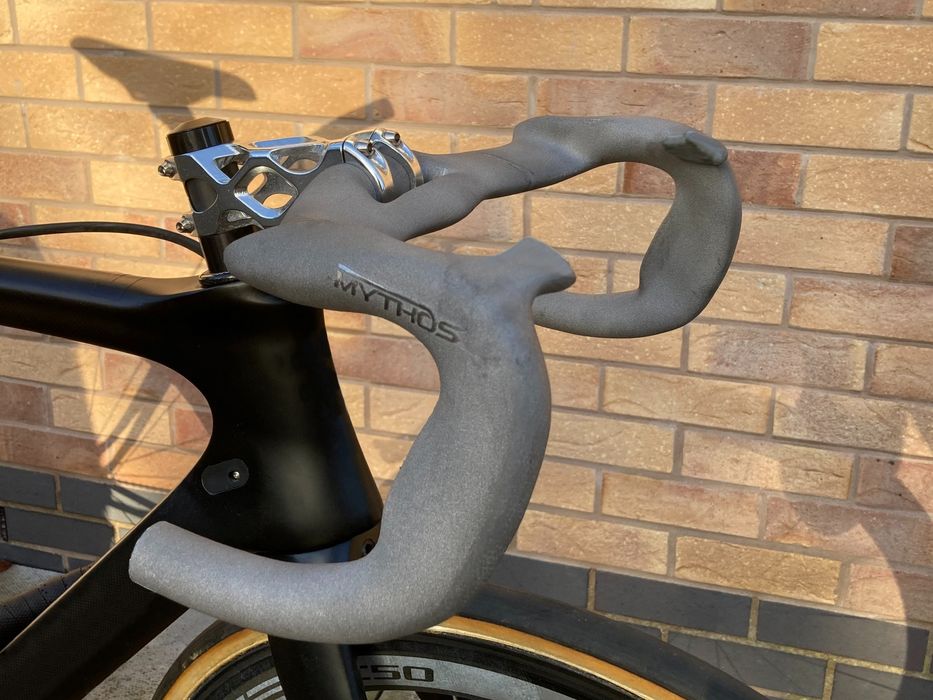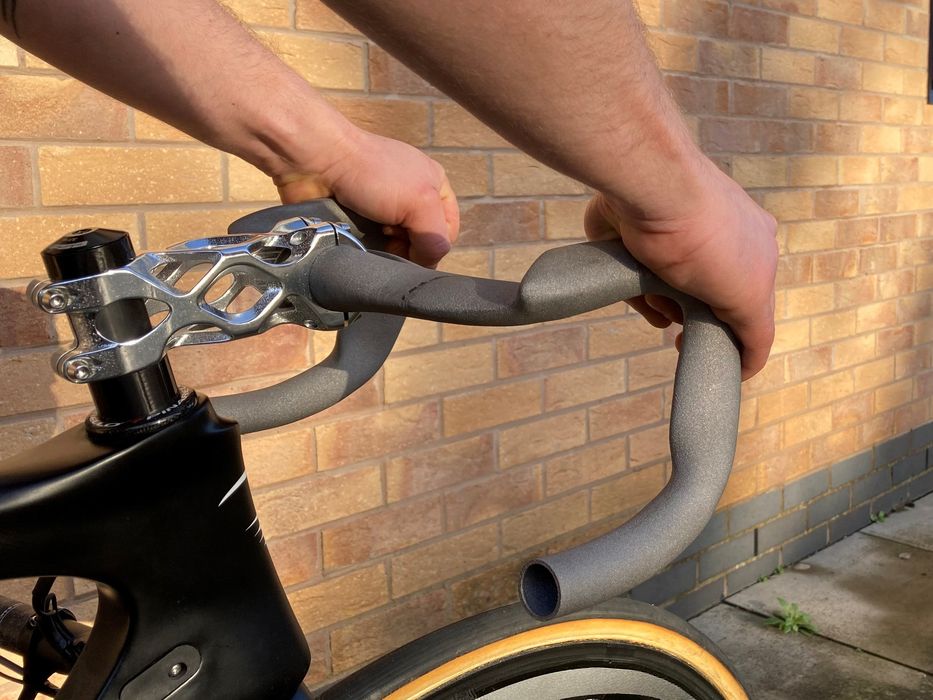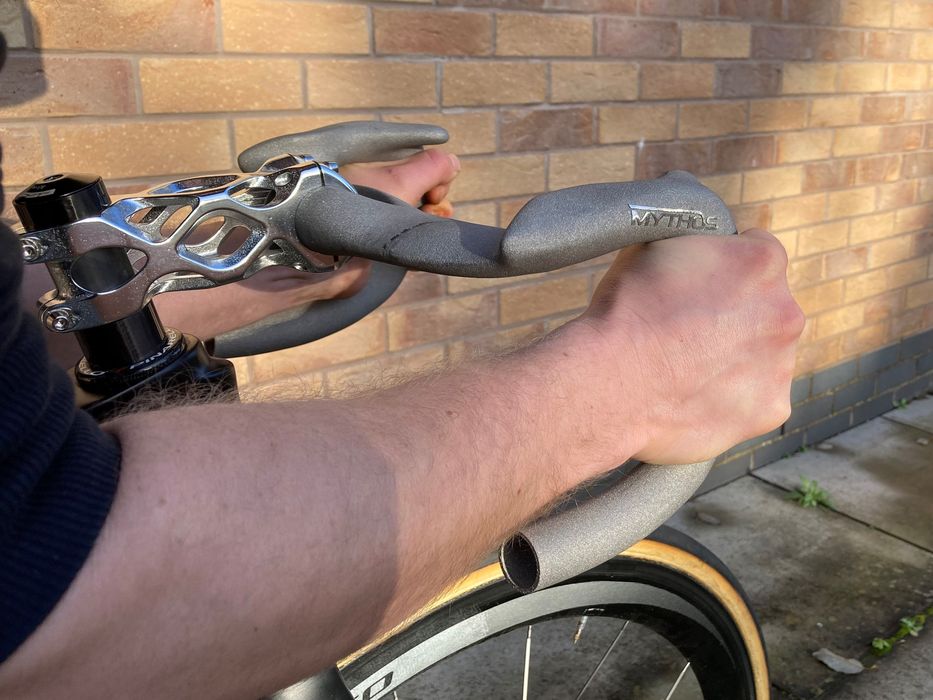
This week’s selection are the incredible titanium 3D printed bike handlebars by MYTHOS.
MYTHOS is a UK-based engineering firm that specializes in high-end bike parts. Their equipment has been successfully used by top-level cyclists in major events worldwide. MYTHOS said:
“With a record totalling more than 100 gold medals across the Olympics, World Championships, and all 3 of cycling’s Grand Tours, MYTHOS exists to drive further innovation to the wider cycling community.”
To achieve this MYTHOS makes heavy use of 3D print technology. Unlike many other biking initiatives that use polymers or carbon fiber materials, MYTHOS instead uses metal materials. Specifically, they use EBM and DMLS metal 3D print processes, which are likely outsourced to local services by MYTHOS.
Currently their online shop displays five extremely high-end bike parts, ranging from stems to handlebars. One of the newest items is the MYTHOS TX-1 Track Handlebar, shown at top.

This is quite an unusual handlebar, as it is designed for mass start races and offers a variety of hand positions. They explain:
“Designed specifically for mass start track races, the TX-1 takes advantage of the new UCI regulations that allows the handlebar overhang to be 10cm in front of the front wheel axle. By allowing 6 hand positions, the TX-1 significantly increases the rider’s options to maximise aerodynamics, rider manoeuvrability and comfort.”
My consumer-level biking experience tells me that handlebars are usually designed to have one or maybe two comfortable hand positions. That’s not the case with the TX-1, as you can see in these images, where the rider is easily holding the bike in different positions.
The TX-1 is 3D printed in aerospace-grade Ti6AI4V Titanium metal, and has a lead time of three weeks, which is likely the cycle time for the service to produce the handlebars.

Interestingly, MYTHOS does not surface finish the handlebars, explaining it has a “raw as-made 3D printed finish”. Normally metal 3D prints have a somewhat rough surface, but here that could be an advantage as it provides a level of friction for the palms of the rider.
Want to get one of these for your high-end bike? It is easy to order, but the cost is a whopping £1250 (US$1510), and more if including VAT in Europe.
This is an excellent example of how 3D print technology can reach all the way directly to consumers via online sales. While this item may be out of the price range of most bike riders, it is definitely accessible and opens the path for less expensive options in the future as the price of technology continues to drop.
Via MYTHOS
